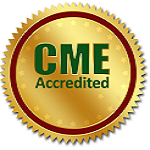
Douglas W Hamilton
University of Western Ontario| Canada
Title: Novel therapeutics for lower extremity non-healing skin wounds: does the answer lie in the extracellular matrix?
Biography
Biography: Douglas W Hamilton
Abstract
Non-healing skin wounds are a major clinical complication associated with aging, diabetes and immobility. Current estimates place the cost of treating these wounds at 2% - 3% of the annual healthcare budgets in developed countries. Many treatments have low clinical efficacy are unpredictable, all too often resulting in limb amputation. Proper wound management from a clinical perspective involves debridement of the damaged tissue, as well as prevention of infection. However to induce healing of the wound, mesenchymal cell recruitment (dermal fibroblasts and perivascular cells) and restoration of blood flow to the wound bed must be achieved. While fibrin and fibronectin normally provide structure to the wound bed during healing, matricellular proteins represent another class of ECM proteins normally upregulated in granulation tissue that modulate the adhesion, migration, proliferation and differentiation of immune cells, perivascular cells, dermal fibroblasts and keratinocytes. As will be demonstrated, based on their described function, the expected pattern of matricellular protein expression within and surrounding chronic skin wounds is highly abnormal which could be partially attributable to the combined presence of tumour necrosis factor alpha and transforming growth factor beta. The loss of expression of matricellular proteins including periostin and connective tissue growth factor (CCN2) appears to have significant functional implications for wound healing, as will be discussed. Finally, based on our analysis of human tissue the development of a granulation tissue mimetic scaffold containing periostin and CCN2 will be highlighted, which appears to “force” wounds into the proliferative phase of healing

